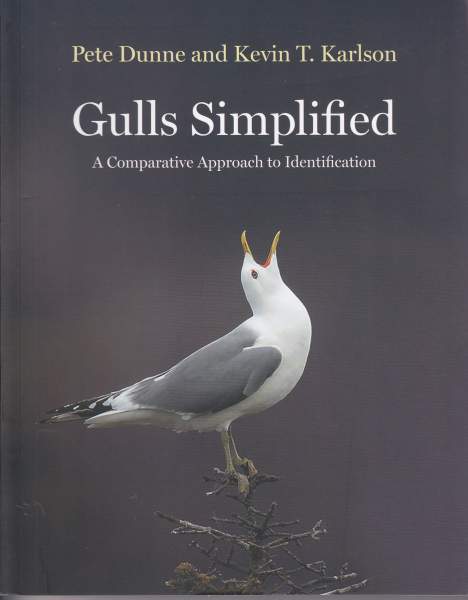
Publisher: Princeton University Press
Publication Year: 2018
Binding: 1
Page Count: 208
ISBN Number: 9780691156941
Price: £20.00
Gulls Simplified: A Comparative Approach to Identification
This book aims to look at shape and structure, before dwelling on finer plumage characteristics, an approach you might already use on raptors. It starts ‘Gulls? No waaaayyeeeeeeeeeee!!!!!!!!!!!!!!!!!!!!!!!!!!’, which rather sets the tone for the rest of the book; chatty, laid back and informal.
Author Pete Dunne realised he was better able to identify a Lesser Black-backed Gull at 200 yards than at 20 feet. Although, being a book covering the gulls of North America, I can relate to this point when thinking about species such as Caspian Gull here in the UK, or Lesser Black-backed Gull vs Greater Black-backed Gull, structure is a good place to start. It is acknowledged early on that you could argue (quite easily!) that gulls cannot be simplified, but that the pathway to identification can be. Gull nuts subconsciously do it all the time, narrowing down the options on structure.
Pages six to nine are full of gull profiles – the first two pages are cut-out photographs, the latter two are those same images in silhouette, bringing to life the point exactly. This is followed by illustrated anatomical terms. One (of the many) things I like about this book is that these terms are repeated throughout. For example, on a given species page, where the text mentions the tertials or wing coverts, the accompanying image will have labelled pointers showing readers where those parts of the gull are, so you don’t have to keep flicking back to the introductory pages – it makes the book very accessible to all.
Why would it need pointers to plumage characteristics if we are only looking at structure? Well, this book doesn’t underestimate the need to look at plumage and does go into detail regarding within-species variation of plumages of similarly aged gulls. This is also highlighted with the important addition of the date each photograph was taken, allowing readers to properly analyse the image.
Ah the images… the cover sets the standards high, and the full-page images within are simply stunning too. OK, if I have to choose – the Ring-billed Gull by John McNamara on page 32 is probably a personal favourite. The majority of photographs are by Kevin T. Karlson and make for a beautifully illustrated publication. If I were being very picky, it would be nice not to have the same images repeated, for example, the flight shot of the adult breeding Heermaan’s Gull and profile snaps of an immature Thayer’s Gull and Iceland (Kumlien’s) are used a couple of times – I would have hoped there would be enough images to show various points without recycling the same image – but it’s not something you’d notice unless you’d looked through the book as often as I have! Overall, they are perfectly placed to explain a point and many are fascinating; with species in the same frame allowing direct comparisons.
These images teamed with the friendly style of writing make you want to read and study every corner of this book, every paragraph, every caption and to top off the enjoyment – a quiz! Oh yes, this book has a photographic quiz at the back, and it is great fun – really!
From a UK perspective, you will need to ignore some of the American spelling, for example the colour ‘gray’ and the term ‘molt’ – unfortunately two of the most frequently used words in gull identification! Species names may cause some confusion for those who don’t know the quirks in common bird names such as their Herring Gulls are American Herring Gulls when they visit the UK and a distinct species, ‘Iceland’ Gull is our ‘Kumlien's’ and ‘our’ Common Gulls are their Mew Gull – the latter two pairs being separate races. Overall though, it is a refreshingly uncomplicated read and I often find myself browsing through the pages again and again.
This is a book on the gulls of North America, aimed to complement other gull books on the bookshelf (even for the American audiences) as stated by the author. It provides an enjoyable read, is easy on the eye and for those of us who are gull mad, it makes one look at gulls from a simplified perspective once more. For those new to gull identification, this book probably isn’t going to be very helpful when learning gull identification in the UK, but for those who are already hooked and searching for vagrant gulls from the other side of the pond here in the UK, it really is a lovely book and now sits proudly between my other gull books! OK, that’s a lie, it mostly lives on the floor next to my bed but staying off the bookshelf and in easy reach is a good sign!
A highly recommended book for North American and UK gull geeks of all abilities.
Book reviewed by Sarah Harris
Buy this book




Share this page